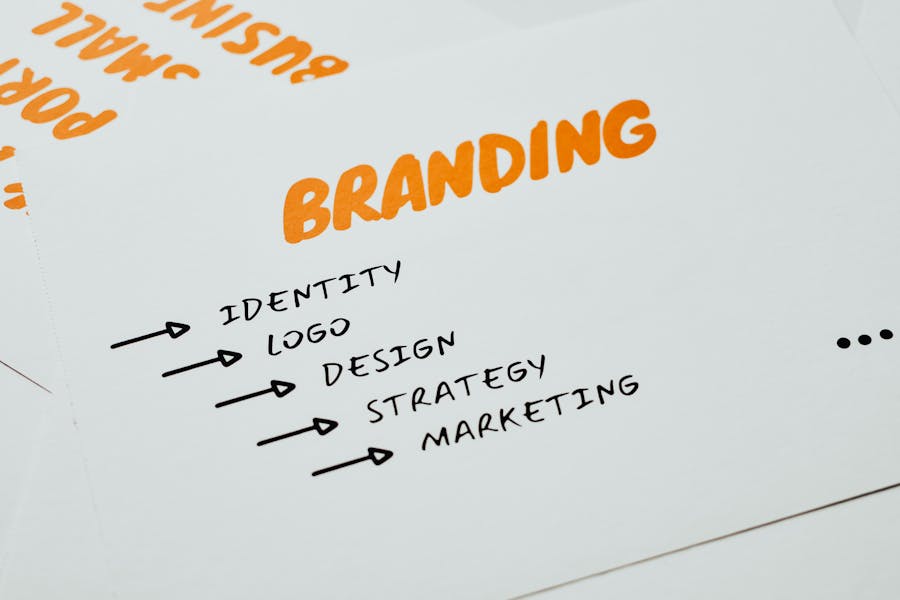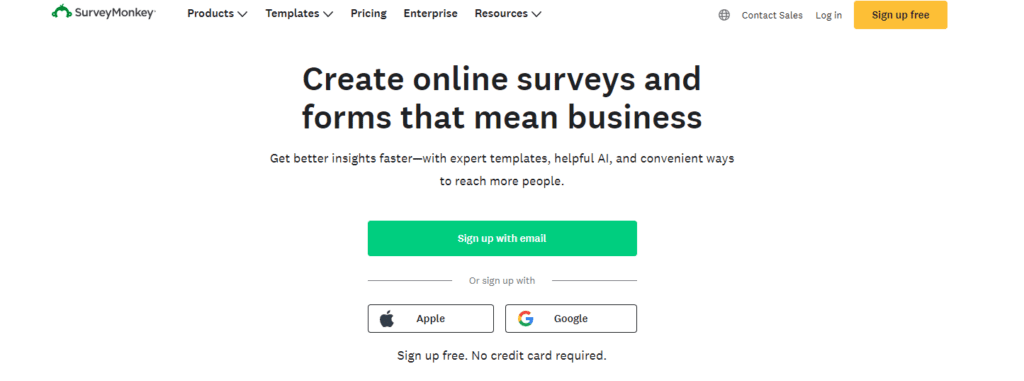Branding for Small Businesses: Building a Strong Identity on a Budget
When launching a business, most entrepreneurs pour their resources, their attention, into advertising and marketing. To drive traffic to their store or website. But there’s often one crucial aspect that gets overlooked: branding. There is a misconception that branding is reserved for large companies with hefty budgets. While it’s true that big brands often invest significantly in their branding efforts, the reality is that building your brand should start from day one, no matter your budget.

In fact, branding for small businesses is more like a long-term investment.
As Steve Forbes once said, “Your brand is the single most important investment you can make in your business.”
So, how can small businesses create a powerful brand on a limited budget? The key is laying a solid foundation and making strategic moves from the beginning. In this blog, we’ll dive into the essentials of branding for small businesses. About building a strong brand identity without breaking the bank. Let’s get started on making your brand investment count!
Why Branding Matters Even When Money is Tight
Before we begin, here’s a quick definition of branding in the words of Jay Baer, a renowned marketing expert.
“Branding is the art of aligning what you want people to think about your company with what people actually do think about your company. And vice-versa.”
Therefore, branding isn’t about your logo. It isn’t about what you sell. It is about creating a unique identity that accurately represents your story and what you stand for. Branding is about differentiating your company from your contenders. About shaping customer perspectives so that your target customers see you exactly the way you want them to!
Now let’s address the one big question about branding for small businesses – do you really need to spend money on building a brand when your budget is already tight? Short answer, yes! We’ll let the facts below give you a longer answer:
- Branding is about establishing your brand as a familiar face, through consistent presentation. Study shows that such a consistent presentation can help increase a business’s revenue by about 23%.
- A strong brand attracts customers and sets you apart in a competitive space. No wonder, nearly 77% of marketing experts believe branding to be a crucial element in a business’s growth.
- Branding is what helps establish your company’s authenticity, by showcasing your values and building trust. Therefore, since about 88% of consumers find authenticity to be crucial when choosing brands to support, branding is a worthy investment for small businesses.
Having established the significance of branding for small businesses, let’s quickly move to the topic of the day – branding on a budget.
Branding on a Budget: Strategies That Work for Small Businesses
Understand your audience – the power of market research
As they say, “Well begun is half done”. Therefore, when you are starting on a small budget you would want to be sure that every decision you make is aligned with your target audience. By understanding the people you are trying to reach you can effectively tailor your messaging and identity to resonate with them.
In short, market research is about delving deep into your target market to understand the needs, likes, and dislikes of your target customers. With this, you can focus your budget on the right audience and with the right strategies without wasting time and money on ineffective messaging.
So, how do you conduct market research when you are on a tight budget?
- Use free tools like Google Trends to identify what’s trending and what your target audience is searching for.
- Conduct surveys – use tools like Google Forms or SurveyMonkey to gather feedback from your audience.
- Use social media – create polls and gather user questions to gauge the pulse of your target audience.
Create a memorable logo and visual identity
Your brand is not just your logo but your brand is also nothing without a memorable logo. So, yes, a well-crafted logo is the cornerstone of branding for small businesses.
Along with your logo, you also need to define a visual identity system consisting of a specific set of colors, fonts, and imagery that craft your brand’s visual narrative cohesively and effectively.
So, how do you create your visual identity when you are on a tight budget?
- Working with DIY tools is definitely a good option. In fact, there are many AI logo makers available in the market today. However, branding is one area where you cannot compromise authenticity and originality. Therefore, a design unique to your brand can be one of the best things to invest in. Unlimited design services that take care of branding and marketing graphics can be a cost-effective solution here. This way you can be sure that you are working with a professional design team to shape your brand’s visual identity to create an impact in the long run.
- Apply your understanding of your audience to the designs you create. Even the most aesthetically appealing logo will be of no use if it does not resonate with the people your brand is designed for.
It might be less than a decade since the launch of OpenAI and the company has been the center of public discussion for just over a couple of years. But the logo above has become a well-recognized symbol among internet users. This is due to the simple and memorable visual identity and the consistent use of this identity across various channels.
OpenAI’s successful branding demonstrates that crafting a simple and memorable logo and consistently representing your brand from day one can help build a solid reputation.
Define a voice and personality for your brand
Your brand’s voice and personality are how you communicate with your audience. Therefore, these are essential details in how your business is perceived. There might be several other companies offering exactly what you offer, doing exactly what you do. Hence it’s your unique personality and voice that can help distinguish your brand from the rest.
Do you want to be seen as casual or professional? Witty or inspirational? You need to define your brand voice and consistently use it in your branding and marketing materials from the get-go. This amplifies the impact of branding for small businesses.
For instance, consider the Duolingo brand. Whether it is their social media post or a billboard ad or even the app notifications that pop up, their brand voice is always playful, expressive, and engaging. This unique voice has been a crucial factor in helping the brand get noticed.
Tips to execute on a tight budget:
- Clearly define your brand values. The best kinds of customer relationships are those built on shared values. And these values are what define your brand’s personality and humanize it.
- Apply the findings of your market research to optimize your brand voice to resonate with your target audience.
- If you wish to start off on the right foot, be authentic. Even if it is a small budget you set aside for your branding efforts, ensure that these efforts are aligned toward representing what makes your business unique.
For more insights on how to let your brand voice shine in your campaigns, check out our blog here.
Draft your brand guidelines
Brand guidelines or brand style guide is a document that captures all the nuances of representing your brand and presenting your brand identity. In short, it is a rule book that says what your brand looks, sounds and feels like.
The below snapshot is from the brand guidelines of Starbucks. From the use of the logo to the brand colors and typography, and the illustrations and photography used to promote the brand, there are clear instructions about every little detail. Their brand guidelines accurately capture how to and how not to depict the brand.
Similarly, your brand guidelines need to document the essential brand elements and rules for using them, like:
- Logo
- Brand colors
- Brand fonts
- Brand voice
- Tagline
- Logo variations
- Brand imagery
So, why are brand guidelines essential in branding for small businesses? Because along with the understanding of your target audience, a clear set of rules to represent your brand can help provide a clear direction for your branding. Given that consistency is key to building brand recognition and trust especially when working with a tight budget, you need clear brand guidelines.
To know more about defining the rules for your branding and marketing designs, check out our blog on brand guidelines.
Build brand awareness through social media
Building brand awareness is a pivotal step in branding and social media can be a game-changer in that area. Besides, most social media platforms are free to begin with. Therefore, a sound social media strategy is a must-have in branding for small businesses.
Platforms like Instagram, Facebook, TikTok, and LinkedIn offer a cost-effective way to showcase your brand, connect with potential customers, and drive traffic to your website. Moreover, given the massive reach these platforms have, they provide you with cost-effective ways to reach more people even when your budget is tight.
Social media platforms are great channels for sharing your brand’s personality and values, helping to create a deeper connection with your audience.
So, how do you leverage social media for brand awareness when working on a tight budget?
- Instead of focusing on every single social media platform out there, find the ones where your target audience is most active. For example, TikTok and Instagram are great places to get started if your focus is on younger audiences. In comparison, B2B startups benefit from LinkedIn.
- Create content that can easily be repurposed across channels. For instance, choose your well-performing blog posts, ones that draw a lot of traffic to your website, and create a carousel based on it. Or a video post. These are formats that work well on social media and you already know from your website analytics that the content resonated well with your audience.
For instance, Perplexity AI has been one of the fastest-growing AI startups in recent times and they have consistently built a strong social media presence. Here is a snapshot of their Instagram page filled with product updates, announcements, and engaging video posts.
Establish ongoing engagement through newsletters
Data shows that it takes about 6 to 7 impressions for consumers to begin recognizing your brand. Such consistent and repeated impressions should also occur naturally and not look forced or intrusive. One of the most effective ways to achieve this will be through newsletters.
Newsletters create a means for you to stay in touch with your audience and reinforce your brand identity. These can be in the form of traditional email newsletters or even LinkedIn newsletters which have gained a lot of popularity in recent times.
For example, Gary Vaynerchuk, a renowned digital marketing and social media expert is known for his strong personal brand. His LinkedIn newsletter titled “LinkedIn 360 l By GaryVee” has been a crucial element fueling the growth of his personal brand.
From this example and many others like this one, it’s clear that LinkedIn newsletters and traditional email newsletters can all be powerful tools to aid branding for small businesses as well as for building a personal brand on a budget.
One of the main reasons behind the effectiveness of newsletters in branding for small businesses is the fact that a consistent tone of voice and aesthetics in your newsletters can help boost brand awareness and imprint your brand’s identity and personality in the minds of your consumers.
So, how do you start building your newsletters when on a small budget?
- There are many free as well as low cost email marketing tools that can enhance your email marketing strategy and help set up your newsletter.
- Boost newsletter sign-ups through lead magnets like free guides, exclusive content and discounts.
- Repurpose old blog posts to create informative and engaging long-form content when crafting your LinkedIn newsletters.
Need help designing your newsletters and creating a cohesive aesthetic for them? Get a KIMP Graphics subscription.
Consider brand partnerships
Collaboration leads to growth, especially for small businesses. This is why brand partnerships can be valuable assets in branding for small businesses.
Finding the right brand partner is a good way to boost your reach and also strengthen your brand awareness on a limited budget. Strategic brand partnerships allow you to share resources and build on each other’s popularity. And yes, this applies to both co-branding campaigns with other brands who share similar target audiences as well as partnerships with creators or influencers in your niche.
Be on the lookout for relevant brands to partner with. These could be brands in niches that slightly overlap your niche and have similar target audience demographics but do not directly compete with you.
If you have a good budget then you can consider partnering with big brands looking for local partners. For instance, McDonald’s Germany partnered with a local location-based startup, Targomo to identify optimal locations for McDonald’s restaurants in the local market. Partnering with major players like these can amplify your brand’s reputation instantly.
Or if your budget is too tight and you still wish to tap into the perks of brand partnerships, identify relevant local partners for a small-scale partnership. For example, a local clothing boutique can benefit from partnering with a jewelry designer to focus on the fashion-conscious crowd. Or a local gym can partner with a smoothie bar in the locality for a unique campaign focusing on the fitness-conscious.
For more insights on effective collaborations, read our blog on brand partnerships.
Branding On a Budget? Choose KIMP!
In all these strategies, a reliable design partner is an indispensable asset. But professional design can be expensive right? Well, not always. If you need to reap the benefits of working with a professional design team in the most cost-effective manner, then an unlimited design service like KIMP can be a practical choice.
From crafting your brand guidelines to creating your logo, designing your branding must-haves like business cards and packaging design, engaging emails, and other designs are all created by a dedicated design team. All this is for a flat monthly fee. So, you know exactly what you are spending each month on design and the predictability this brings to your budget can benefit your small business a great deal.
Ready to experience the difference that an unlimited design can bring to your branding efforts? Sign up for a free 7-day trial today!





